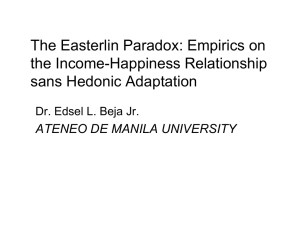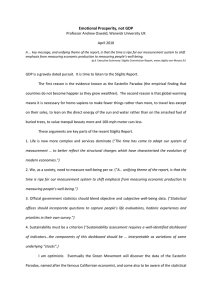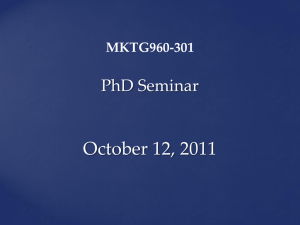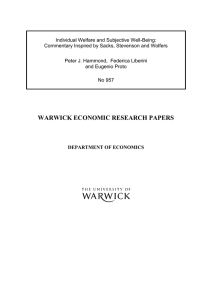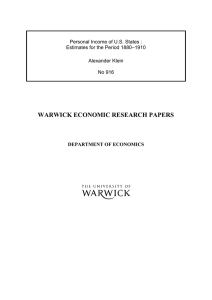Supplementary Reading
advertisement
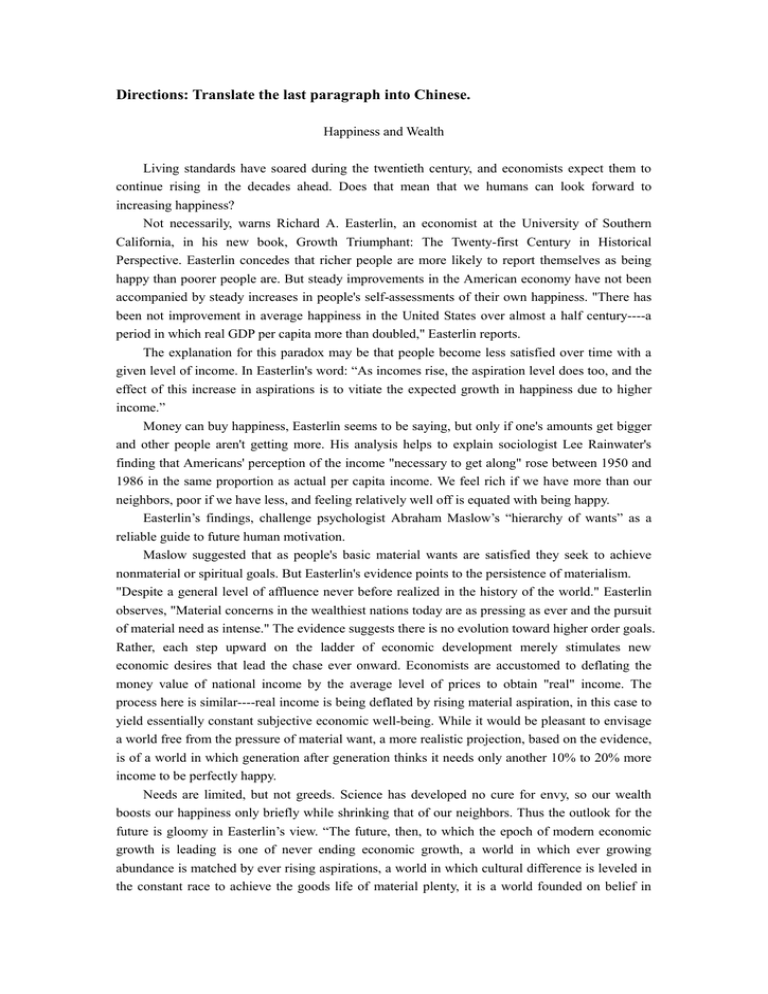
Directions: Translate the last paragraph into Chinese. Happiness and Wealth Living standards have soared during the twentieth century, and economists expect them to continue rising in the decades ahead. Does that mean that we humans can look forward to increasing happiness? Not necessarily, warns Richard A. Easterlin, an economist at the University of Southern California, in his new book, Growth Triumphant: The Twenty-first Century in Historical Perspective. Easterlin concedes that richer people are more likely to report themselves as being happy than poorer people are. But steady improvements in the American economy have not been accompanied by steady increases in people's self-assessments of their own happiness. "There has been not improvement in average happiness in the United States over almost a half century----a period in which real GDP per capita more than doubled," Easterlin reports. The explanation for this paradox may be that people become less satisfied over time with a given level of income. In Easterlin's word: “As incomes rise, the aspiration level does too, and the effect of this increase in aspirations is to vitiate the expected growth in happiness due to higher income.” Money can buy happiness, Easterlin seems to be saying, but only if one's amounts get bigger and other people aren't getting more. His analysis helps to explain sociologist Lee Rainwater's finding that Americans' perception of the income "necessary to get along" rose between 1950 and 1986 in the same proportion as actual per capita income. We feel rich if we have more than our neighbors, poor if we have less, and feeling relatively well off is equated with being happy. Easterlin’s findings, challenge psychologist Abraham Maslow’s “hierarchy of wants” as a reliable guide to future human motivation. Maslow suggested that as people's basic material wants are satisfied they seek to achieve nonmaterial or spiritual goals. But Easterlin's evidence points to the persistence of materialism. "Despite a general level of affluence never before realized in the history of the world." Easterlin observes, "Material concerns in the wealthiest nations today are as pressing as ever and the pursuit of material need as intense." The evidence suggests there is no evolution toward higher order goals. Rather, each step upward on the ladder of economic development merely stimulates new economic desires that lead the chase ever onward. Economists are accustomed to deflating the money value of national income by the average level of prices to obtain "real" income. The process here is similar----real income is being deflated by rising material aspiration, in this case to yield essentially constant subjective economic well-being. While it would be pleasant to envisage a world free from the pressure of material want, a more realistic projection, based on the evidence, is of a world in which generation after generation thinks it needs only another 10% to 20% more income to be perfectly happy. Needs are limited, but not greeds. Science has developed no cure for envy, so our wealth boosts our happiness only briefly while shrinking that of our neighbors. Thus the outlook for the future is gloomy in Easterlin’s view. “The future, then, to which the epoch of modern economic growth is leading is one of never ending economic growth, a world in which ever growing abundance is matched by ever rising aspirations, a world in which cultural difference is leveled in the constant race to achieve the goods life of material plenty, it is a world founded on belief in science and the power of rational inquiry and in the ultimate capacity of humanity to shape its own destiny. The irony is that in this last respect the lesson of history appears to be otherwise: that there is no choice. In the end, the triumph of economic growth is not a triumph of humanity over material wants; rather, it is the triumph of material wants over humanity.”
